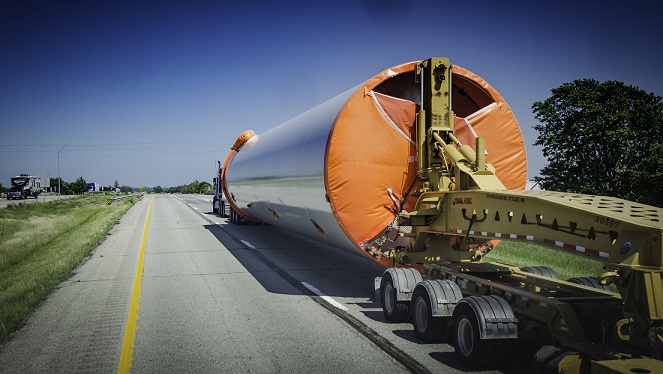
Each state has its own regulations regarding over-sized loads so there's no one set of regulations to follow in order to be compliant in another state. The next time you pass an over-sized load, here are some of the things going through the driver's mind.
- Regulations for placement of flags on truck, trailer and load for state.
- Staying on the very specific route that he is permitted to drive on per the DOT.
- Is it permissible to drive at night? Many states prohibit driving a half hour before/after sunset.
- How about on the weekends? Some states have limited weekend travel.
- What about holidays? Some states prohibit holiday travel because of increased traffic.
- Some states have 55 mph speed limits for over-sized no matter what the posted limit is.
- Some states require headlights on all the time
With all of the above weighing in on the driver's mind, he also has to operate the over-sized load safely and he often does this without any help or consideration from fellow truck drivers or motorists. It has been my experience that all those signs and flags whipping in the wind mean nothing to most truck drivers and motorists. On a recent load to Florida, all motorists buzzed right past me in a construction zone with decreased width, oblivious to the electrical transformer that rested 12" off of both sides of the trailer. I even had to close the gap and save the life of a guy pulling a camper with his pickup before he tried to pass me in a construction zone with decreased width.
Without further delay, here are 7 tips for driving around over-sized loads.
- Never pass an over-sized load in a construction zone.
- When an over-sized load signals to get over, there's a good reason. Let them in.
- Don't follow too closely; the increased width makes it hard to see what's behind.
- Communicate on CB if possible to communicate intent.
- Look for the red flags on the freight; this marks the widest point on the load.
- Don't try to squeeze beside them in a truck stop parking space. They may need 2 spots and in many states they're forbidden to use rest areas per the regulations.
- When it's safe to pass, do so quickly in order to minimize the time you're in a high risk zone with minimal horizontal clearance.
Thanks to TruckStockImages.com for the use of this photo.